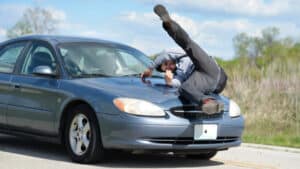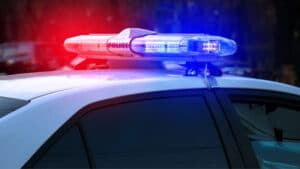Written By: Chris Dolan and Monica La
According to the California DMV, most drivers, no matter how carefully they drive, will be involved in at least one vehicle collision during their lifetime, and one person in three will be injured or killed. Some of the common causes of vehicle collisions are:
- Unsafe speed
- Driver distractions
- Driving on the wrong side of the road
- Improper turns
- Violation of the right-of-way rules
- Violation of stop signals and signs
- Mobile device use
California is an at-fault state for motor vehicle collisions, and the law dictates that an at-fault driver involved in a car accident is responsible for the injuries and damages experienced by any other party involved in the accident. However, California operates under comparative negligence, which allows for shared responsibility among multiple people involved. So, how should you proceed if you are ever involved in a motor vehicle collision? Provided below is a simple guideline on steps to take:
- Immediate Safety Measures
Immediately after a motor vehicle collision, stop as soon as possible, assess the situation, and determine whether you or the passengers in your vehicle sustained any injuries. If injuries are sustained, do not move them and contact 911 as soon as you can. Per the California DMV, you must also do the following:
- If no one is injured or killed, move your vehicle off the street or highway. If you do not move your vehicle or have it removed from the street or highway, any peace officer or authorized personnel may have your vehicle removed and impounded (Vehicle Code [VC] §§22651 and 22651.05).
- If anyone is killed or injured and law enforcement is not present at the scene, report the collision in writing to the police or CHP immediately. When the driver of a vehicle involved in a collision cannot report a collision to the police or CHP, any occupant who was in the vehicle at the time of the collision shall make the report on behalf of the driver.
- Contacting Authorities & Filing a Police Report
Call 911 regardless of injuries, as police officers can help assess the situation and help with traffic control.
In some areas, police authorities may respond to every accident scene; in others, they may not respond if injuries are not sustained. The police may consider factors such as the severity and location of the accident (some police authorities will not come to the scene if the accident is on private property). However, you should attempt to notify the police. You should also be aware that most policies require notification to the police within a specified period if the accident is a hit-and-run.
- Exchanging Information
If you and the other driver can do so, it is extremely beneficial to exchange the following information:
- Name
- Driver’s license number
- Phone number
- Address
- License plate number of vehicle
- Make and model of the vehicle.
- Owner of the vehicle, if not the driver
- Name of driver’s insurance company and policy number
In the aftermath of an accident, this might be difficult information to obtain, or the other driver may not want to provide you with it. If the situation is the latter, do not argue with other involved parties. Gather as much information as you can, such as a photo of the vehicle involved and the license plate number.
- Documenting the Scene
If you can move around safely, use your phone to take pictures of the accident scene. Focus on visible damage to your car and its position in relation to other vehicles, buildings, the sidewalk, and obstacles such as trash cans and lamp posts. If you see skid marks or debris from the crash, take photos of those as well. Pictures of the accident scene and damage to your vehicle can be evidence in a potential case.
If you can, talk with witnesses who saw the accident and ask for their names and contact information. They may be able to provide testimony if a case regarding the accident goes to trial.
- Notifying the Insurance Company and/or the CA DMV
Notify your agent or insurance company immediately; the longer you wait, the more complicated your situation may become. If you were able to exchange information, you may also notify the at-fault party’s insurance company and open a third-party claim at this stage.
Also note that in California, If anyone is injured or killed or if the vehicle damage exceeds $1,000.00, you or an authorized representative must report the accident to the Department of Motor Vehicles within 10 days. This report is required in addition to any other report made to the police, CHP, or your insurance company. Failure to notify the DMV may result in the suspension of your driver’s license.
- Seeking Medical Attention
If you feel unwell or might be hurt in the aftermath of an accident, it is in your best interest to call 911 and seek medical care. Even if the accident was minor, you may still want to seek medical attention, especially if you notice any new pain or injury symptoms in the days following the accident. Taking note of your injuries is beneficial, no matter how small they may seem at first; if they develop into a more serious problem and you decide to take legal action, having a medical record of them is helpful.
- Consulting a Lawyer
Contacting an experienced lawyer handling motor vehicle collision cases can help you navigate most of these steps. When you are in a stressful situation, especially when injuries are sustained, it is useful to have experienced attorneys help you deal with the aftermath. This allows you to focus on healing and getting the medical attention you require.
If you have been injured in a car collision in California and do not know what to do, seek legal help from Dolan Law Firm. Our attorneys are ready to discuss your case and help you file a claim against the at-fault party. For more information, go to Dolanlawfirm.com.










